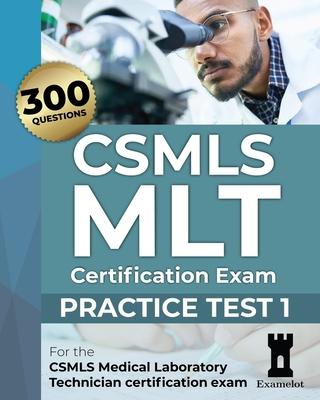- 300 practice questions, including image-based questions and case studies, aligned with the official CSMLS MLT exam guidelines
- Answers and explanations
- Information and tips for the CSMLS MLT exam
- An index for easy reference
- Content tailored to Canadian standards, including Canadian units and reference ranges
SAMPLE QUESTIONS
To give you a preview, here are four sample questions from the book: 1) SAFE WORK PRACTICES
Which of these actions helps prevent the release of aerosols in the laboratory?
a. Filling centrifuge tubes to the brim
b. Forcibly expelling hazardous materials from pipettes
c. Opening aerosol containment devices immediately after removing them from the centrifuge
d. Routinely inspecting the centrifuge to ensure there is no leakage 2) DATA AND SPECIMEN COLLECTION AND HANDLING
A phlebotomist is drawing blood from a young boy. The boy's mother is in the room and she says she doesn't like the sight of blood. She looks pale and says she feels faint. The phlebotomist should:
a. ignore the mother as the focus should be on the child
b. offer the mother a chair to sit in
c. take the child's blood as quickly as possible to get it over with
d. tell the mother not to worry 3) ANALYTICAL PROCESSES
A urine sample, an oral swab, and a blood culture arrive for microbiology processing at the same time. In which order should they be processed?
a. Blood culture, oral swab, urine sample
b. Blood culture, urine sample, oral swab
c. Oral swab, blood culture, urine sample
d. Oral swab, urine sample, blood culture 4) INTERPRETATION AND REPORTING OF RESULTS
The results of a comprehensive metabolic panel show decreased calcium levels and elevated potassium levels. All other results are normal. What is the most likely cause of these results?
a. The patient is taking excessive vitamin D supplements
b. The sample was stored at room temperature
c. The sample was taken from an arm with an intravenous drip
d. The tube was contaminated with EDTA Answers
1) d. Routinely inspecting the centrifuge to ensure there is no leakage
Leaking or broken tubes can release aerosols during centrifugation. If the centrifuge itself is damaged or cracked, these aerosols can then escape into the laboratory air. Therefore, you should regularly inspect centrifuges for cracks, fissures, and holes. 2) b. offer the mother a chair to sit in
The mother is showing signs of faintness. Offering her a chair is the most appropriate action because it will prevent her from falling and hurting herself. 3) b. Blood culture, urine sample, oral swab
The blood culture should be prioritized because it is the most time-sensitive. Blood cultures also have the potential to indicate a life-threatening infection. Urine samples should be given the next priority because they can indicate urinary tract infections, which can cause serious health problems if left untreated. 4) d. The tube was contaminated with EDTA
Contamination of a blood sample with EDTA causes falsely decreased calcium and falsely elevated potassium levels.
